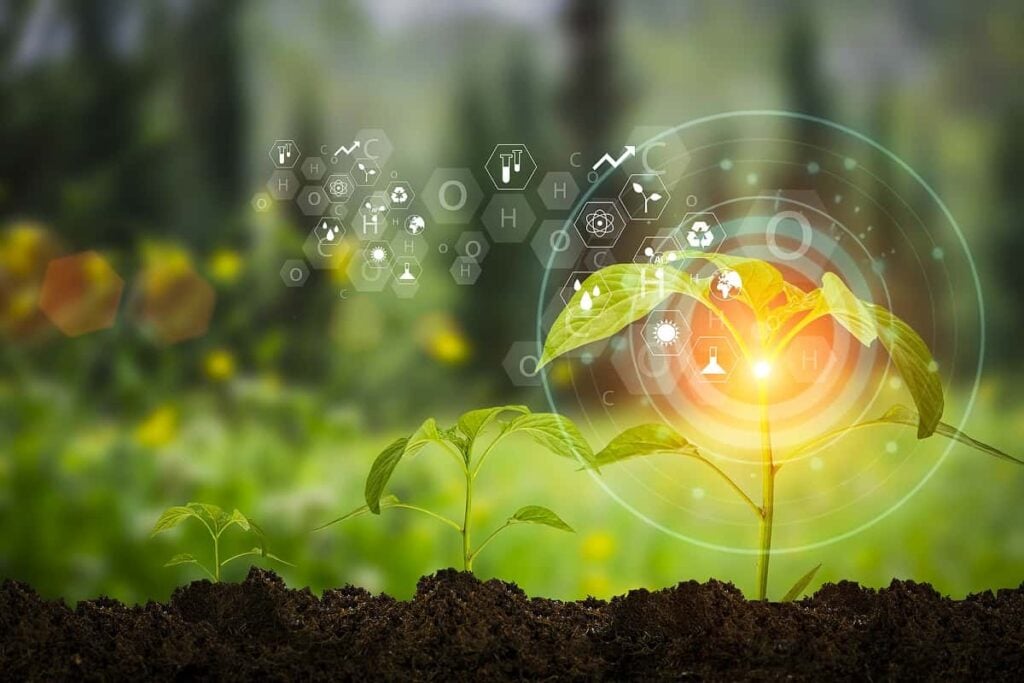Cannabis Research to Make Marijuana Cannabinoids Cheaper
Table of contents

We recently ventured deep into Alaska’s Matanuska-Susitna Valley, home to legendary strains like Alaskan Thunderfuck, to learn more about the legal and illegal weed industry in the Last Frontier state. The bottom line: The kind bud is very unkind to your wallet, with an eighth of an ounce (about 3.5 grams) setting you back anywhere from $20 to $40 – and that’s for the cheaper illegal stuff. The most expensive place for legal weed in the whole United States is reportedly Washington DC, where an eighth will lighten your wallet by about $60. Edibles? Expect to shell out about $20 for a 100mg chocolate bar. CBD oil can command even more premium prices, upwards of $200 for a high-quality tincture. Cannabis research may be able to bring the price down dramatically in the next few years.

We’ve previously talked about how learning more about cannabis genetics and doing biotechnology research can produce better weed. The benefits are wide-ranging, from creating consistent product so that you’re not buying bunk to developing natural pesticides or disease-free strains so that you’re not smoking poison. While the trend is definitely leaning toward plant extraction technologies for vaping and infusing drinks and edibles, there’s a rapidly emerging field within the industry that is devoted to doing away with plants altogether.
Brewing Better Cannabinoids
Quite a bit of cannabis research seems suddenly focused on fermenting cannabinoids – the active compounds like THC and CBD that make marijuana so magical – like you might brew beer. The idea is quite similar to what many synthetic biology companies are already doing to make fake food: Identify the genetic information in the plant that produces the compound you need. Find a suitable yeast, bacteria or even algae. Do a little presto chango genetic engineering to convert the microorganism into a cannabinoid-producing biological factory based on the DNA factors in the original plant. Ferment until done. This process of biosynthesis is one of the cornerstones of synthetic biology today:

There are some obvious advantages when applying this technology to producing cannabinoids. There’s no need to maintain huge growing operations, many of which now occupy increasingly expensive real estate in former warehousing districts throughout major cities. That also means lower electricity and labor costs, not to mention reducing the carbon footprint. Lab-based cannabis would theoretically be 99.9% pure and 100% consistent in quality. We should stress that this new generation of biosynthetic cannabis is different than the synthetic marijuana that has rightfully earned a bad reputation over the years. While the former uses genetically modified organisms as a biological factory, the end product is quite natural. The latter is a witch’s brew of chemicals designed to bind to the same cannabinoid receptors in the body as the homegrown stuff but probably contains Drano, formaldehyde, and the secret sauce from the McRib sandwich.

Still, don’t expect your next bowl of Fruity Pebbles to be made in a lab just yet. Cannabis research for producing cannabinoids in a lab is still in the R&D phase, so companies are not yet able to provide pure CBD or THC out of fermentation vats at scale or at a competitive price point. Plant-based extracts are at least still five times cheaper than the estimated $1,000 per kilogram for biosynthetic cannabis. But it won’t take as long as, say, getting to Mars. Experts predict biosynthetic marijuana will be market ready within the next two years.
Big Competition for Biosynthetic Marijuana
We’ve already covered a couple of startups in this space. Montreal-based Hyasynth had less than $1 million in funding when we first discovered them back in April 2018. Fast-forward to today and the five-year-old company has amassed $11.6 million in funding to further develop its yeast-based fermentation process for producing cannabinoids. Meanwhile, a San Francisco startup called Demetrix was founded in 2015 to commercialize the cannabis research being done out of the University of California, Berkeley. It has raised $11 million so far.
Hyasynth and Demetrix were among the first companies attempting to commercialize the technology, but they’re far from alone these days. SynBioBeta, a networking and news website focused on synthetic biology, recently put out a special report on cannabinoid fermentation that identified more than 20 companies and collaborations. It even compiled a handy list of the most well-funded startups and partnerships:

While we can’t cover them all here, let’s look at some of the biggest players and a few of the companies doing slightly different riffs on yeast-based fermentation.
The New Green Deals
Topping the list is the $300 million deal between Amyris (AMRS), a synthetic biology company that makes biosynthetic sweeteners and creams (and once dabbled in biofuels), and a new cannabis startup with some seemingly deep pockets called LAVVAN. Amyris will handle the science end of things, while LAVVAN will manage the business side of the venture. All we really know about the latter is that it is run by “leaders across the cannabis, food and beverage, and pharmaceutical industries,” including the former CEO of Saks and another C-level executive from L’Oréal Luxe. Another struggling publicly traded synthetic biology company, Intrexon (XON), also appears to be pivoting toward cannabis for its salvation (perhaps finding the margins weren’t so high in selling apple slices, after all). The company announced last month it would partner with Surterra Wellness, one of the most well-funded cannabis startups, on a $100 million deal to commercialize yeast-fermented cannabinoids. Rounding out the mega-marijuana deals is a $122 million agreement between Cronos Group (CRON) and startup unicorn Ginkgo Bioworks. The latter will apply its automated organism design platform to modify yeast to produce pharmaceutical-grade cannabinoids.
A Pure Play in Biosynthetic Marijuana

However, there are a couple of interesting points to make about Willow: Its cannabis research team originally leveraged fermentation technology to biosynthesize opiates as a possible solution for the opioid crisis. Second, the company has partnered with pharmaceutical company Noramco, which once upon a time was a division under Johnson & Johnson until it was acquired in 2016 by a private equity firm for a reported $800 million. Noramco is a major supplier of controlled substance APIs (active pharmaceutical ingredients), meaning it has the government’s consent to muck about with serious drugs. About 15 years ago, it developed a generic alternative to Marinol, the first-ever synthetic cannabis drug, which was originally approved for use in 1985 for treating nausea in chemotherapy patients.
Tequila!

Biofuels Redux
Several companies are also ditching the yeast for microalgae, according to the SynBioBeta report. Chief among them is San Diego-based startup Renew Biopharma, which was founded in 2017. Instead of using cannabis plants, Renew’s microbial biosynthetic platform can produce cannabinoids from microalgae, a single-cell plant suspended in liquid. Apparently, cannabis is where failed biofuel ventures end up. Renew’s CEO and co-founder, Michael Mendez, led the microalgae biofuel effort as co-founder of Sapphire Energy, a startup that had raised $376.5 million, but appeared to have folded sometime in 2017 after about a decade. The new company hopes to develop cannabinoid drugs focused in areas such as neurodegenerative diseases, traumatic brain injuries, and pain management.
Lab Automation for Cannabinoid Production

Conclusion
The big question is where will all of this biosynthetic product be used, because you certainly can’t smoke it. Certainly, the recreational edibles and cannabis drink markets are the most obvious applications, once lab-made cannabinoids can compete with the cost of plant extraction. But we suspect, based on some of the latest cannabis research, that pharmaceutical applications may eventually be where the real money is made. Cannabis has already proven its merit in treating certain forms of epilepsy. New research just last month suggests that CBD could prove to be a powerful antibiotic, perhaps offering hope of combating antibiotic-resistant superbugs.
Cannabis research is largely still in its infancy, after decades of government prohibition that stifled scientific investigations, except in a few places like Israel, which is a world leader in the field of medical marijuana. Nominally, many of these synthetic biology cannabis companies are interested in medical applications, so we could be witnessing a new marijuana miracle – or another biofuel bubble.
Sign up to our newsletter to get more of our great research delivered straight to your inbox!
Nanalyze Weekly includes useful insights written by our team of underpaid MBAs, research on new disruptive technology stocks flying under the radar, and summaries of our recent research. Always 100% free.















When expanding cannabis with coco, good quality coco coir would make an huge distinction, Particularly about root advancement. For rookie growers, A 3-to-just one coco to perlite combination is usually recommended mainly because it calls for considerably less watering frequency and retains dampness and nutrients far better.